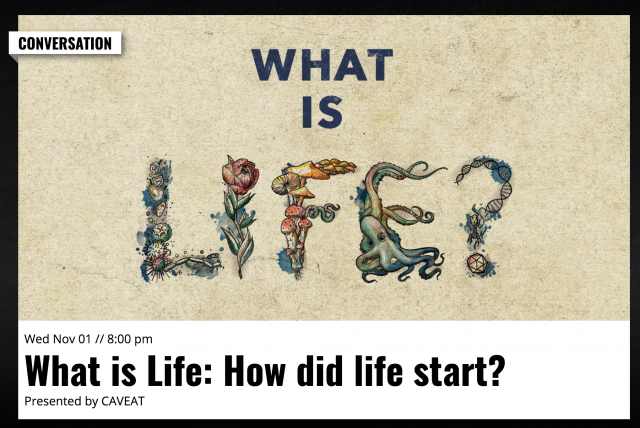Last week I let you know about my upcoming series of talks about life. Here’s an update with the details of the full schedule. All four events will take place at Caveat in Manhattan:
9/6 I’ll kick off the series with the fundamental question, “What is life?” First I’ll talk to a philosopher, Carlos Mariscal, about why this question is so hard to answer–perhaps because the question itself doesn’t make sense. Then I’ll speak with Sara Imari Walker, a physicist and astrobiologist, about how she answers the question as part of the search for extraterrestrial life.
11/1 How did life start? Geochemist H James Cleaves II and I will talk about the century-long struggle to answer that question. I’ll then talk with astrobiologist Caleb Scharf about where that struggle has left us today, and where it’s headed. Continue reading “Friday’s Elk, August 25, 2017”
